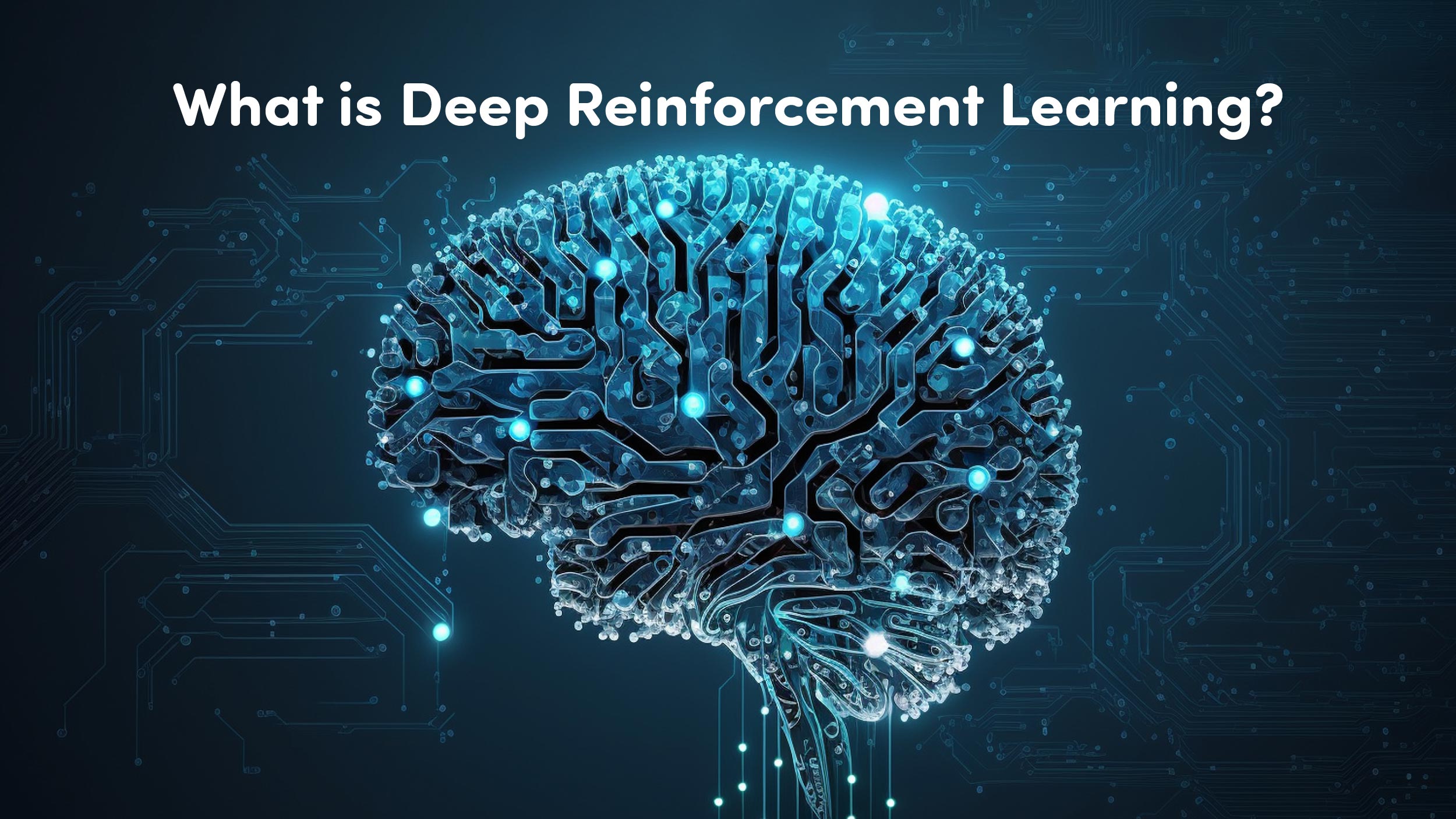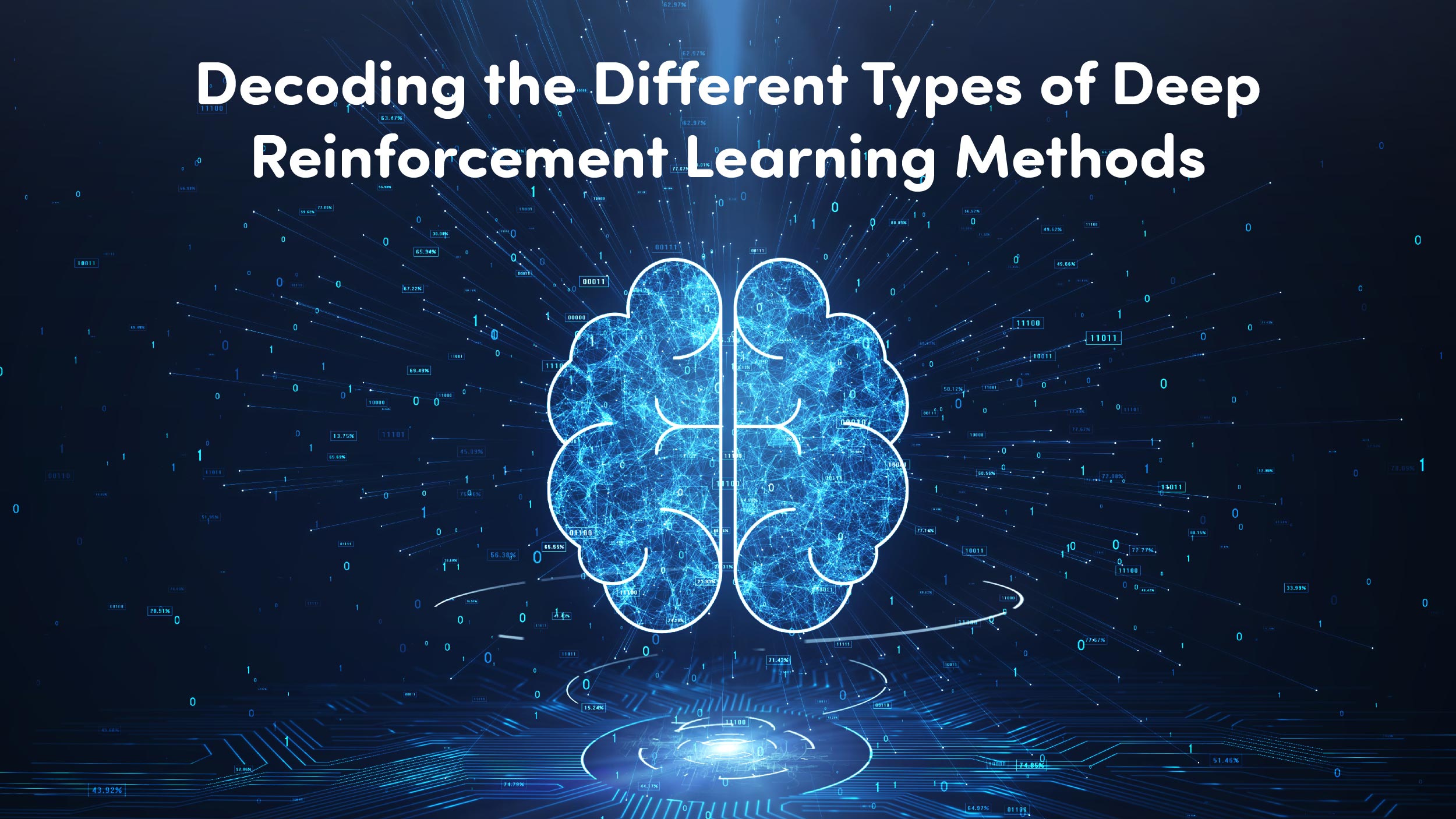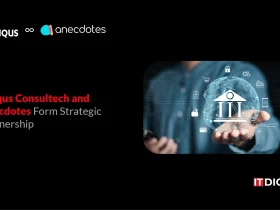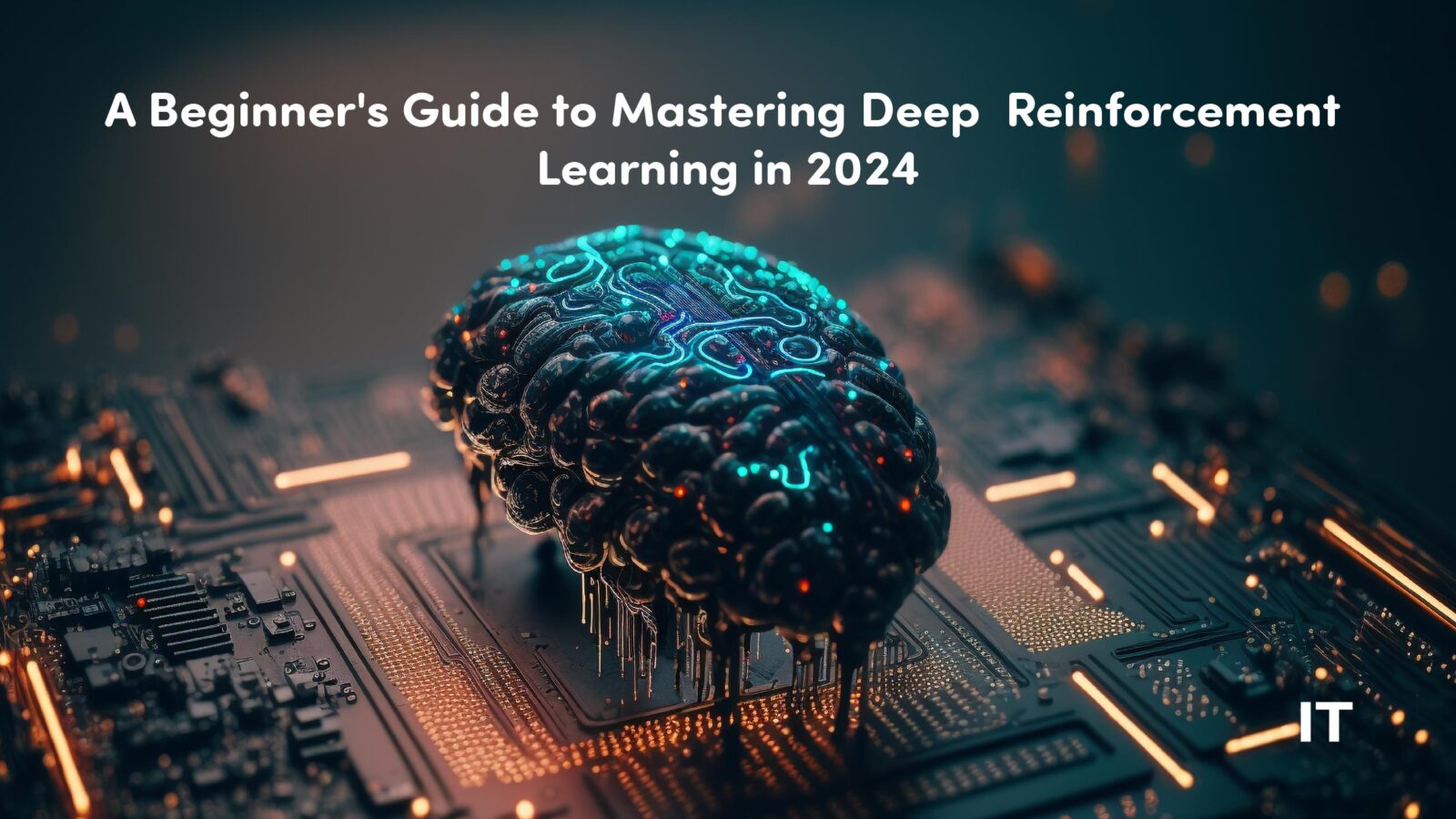Reinforcement Learning (RL) stands as a distinct machine learning algorithm, positioned between supervised and unsupervised learning. It doesn’t strictly fit into the category of supervised learning as it doesn’t solely depend on labeled training data. However, it also differs from unsupervised learning because, in reinforcement learning, the agent seeks to maximize a reward. In pursuit of its primary objective, the RL agent must discern the optimal actions to take in diverse scenarios. Without further ado, let’s learn everything about deep reinforcement learning.
What is Deep Reinforcement Learning?
 Deep reinforcement learning is a specialized area within machine learning that blends reinforcement learning (RL) with deep learning techniques. RL centers on computational agents refining decision-making through trial and error. In contrast, deep RL integrates deep learning methods, empowering agents to make decisions based on unstructured input data without the need for manual engineering of the state space. This approach equips deep RL algorithms to efficiently handle substantial inputs and refine objectives, like maximizing game scores or addressing intricate tasks.
Deep reinforcement learning is a specialized area within machine learning that blends reinforcement learning (RL) with deep learning techniques. RL centers on computational agents refining decision-making through trial and error. In contrast, deep RL integrates deep learning methods, empowering agents to make decisions based on unstructured input data without the need for manual engineering of the state space. This approach equips deep RL algorithms to efficiently handle substantial inputs and refine objectives, like maximizing game scores or addressing intricate tasks.
Imagine this: Deep RL algorithms can handle huge amounts of data and tackle complex challenges. They’re like the superheroes of the tech world, optimizing objectives, whether it’s acing game scores or cracking intricate tasks. And the cool part? They’ve spread their wings across a bunch of fields – robotics, video games, language processing, computer vision, education, transportation, finance, and even healthcare. These algorithms let machines learn from their own experiences, getting better and smarter over time. Deep reinforcement learning is not just tech jargon; it’s the secret sauce making machines savvy learners in a whole bunch of real-world arenas.
Decoding the Different Types of Deep Reinforcement Learning Methods
 Reinforcement Learning (RL) sets itself apart from other learning methods like supervised learning and unsupervised machine learning by not relying on labeled datasets or pre-defined rules. Instead, RL employs trial and error to learn from experience and enhance its policy over time. Some prominent RL methods include:
Reinforcement Learning (RL) sets itself apart from other learning methods like supervised learning and unsupervised machine learning by not relying on labeled datasets or pre-defined rules. Instead, RL employs trial and error to learn from experience and enhance its policy over time. Some prominent RL methods include:
- Value-Based Methods: Estimate the value function, representing the expected cumulative reward for actions in a given state. Q-Learning and SARSA are common examples.
- Policy-Based Methods: Directly learn the policy, a mapping between states and actions maximizing expected cumulative reward. REINFORCE and Policy Gradient Methods fall into this category.
- Actor-Critic Methods: Combine value-based and policy-based methods using two networks – the Actor selects actions, and the Critic evaluates the action’s goodness. The Actor-Critic algorithm updates the policy based on TD (temporal difference) error.
- Model-Based Methods: Learn environment dynamics by constructing a model, including state transition and reward functions. This model enables the agent to simulate the environment and explore actions before executing them.
- Model-Free Methods: These methods do not require the agent to build an environment model; instead, they learn directly through trial and error. Examples include TD-Learning, SARSA, and Q-Learning.
- Monte Carlo Methods: Agents learn about states and rewards by interacting with the environment. Monte Carlo methods apply to both value-based and policy-based approaches.
Each method in RL presents a unique approach to learning and decision-making, catering to different scenarios and applications. Let’s take a look at some of the major end-use industries for this technology.
Also Read: Deep Learning Frameworks Demystified: Which One Fits Your Vision?
Industrial Manufacturing
Deep reinforcement learning finds widespread application in robotics within industrial manufacturing. With inherently sequential actions, robots learn to navigate dynamic environments, leading to applications in industrial automation and manufacturing. This technology has proven effective in reducing labor expenses, product faults, and unexpected downtime. It brings about significant improvements in transition times and production speed.
Self-Driving Cars
Machine learning technologies, particularly deep reinforcement learning, power self-driving cars. Autonomous vehicles leverage large volumes of visual data, utilizing image processing capabilities within Neural Network architecture. Algorithms learn to recognize pedestrians, roads, and traffic, and detect street signs, excelling in complex scenarios and decision-making skills, such as determining the best route while minimizing human risk.
AI toolkits
AI toolkits like OpenAI Gym, DeepMind Lab, and Psychlab play a pivotal role in providing the essential training environments for large-scale innovation in deep reinforcement learning (DRL). These open-source tools are instrumental in training DRL agents, contributing significantly to the advancement of this field. As organizations increasingly integrate DRL into their unique business use cases, we can anticipate continued substantial growth in practical applications.
Trading and Finance
While supervised learning and time-series analysis aid in predicting stock market performance, reinforcement learning plays a unique role in decision-making. RL agents can decide whether to hold, buy, or sell shares, with their performance benchmarked against market standards. This application ensures optimal decision-making in dynamic financial environments.
Natural Language Processing
Reinforcement learning extends its reach to Natural Language Processing (NLP). Tasks like question-answering, summarization, and chatbot implementation benefit from RL agents. Virtual bots are trained to simulate conversations, with policy gradient approaches rewarding sequences exhibiting crucial conversation properties, including coherence, informativity, and simplicity of response.
Healthcare
Reinforcement learning is a growing area of research in healthcare. Bots equipped with biological information undergo extensive training for precision surgeries and diagnostic tasks. RL bots contribute to better disease diagnosis and prediction, especially in scenarios where treatment delays may impact outcomes. This application showcases the potential of RL in improving healthcare practices.
Winding Up
Deep reinforcement learning represents a powerful combination of reinforcement learning and deep learning techniques. By enabling machines to learn through trial and error and process unstructured input data, deep RL has the potential to revolutionize various fields. From robotics to finance, healthcare to transportation, deep RL has shown its ability to tackle complex tasks and optimize objectives. As this field continues to advance, we can expect even greater breakthroughs and transformative applications. Deep reinforcement learning holds the promise of empowering machines to learn and excel, paving the way for a future where intelligent agents can adapt and thrive in dynamic environments.


































